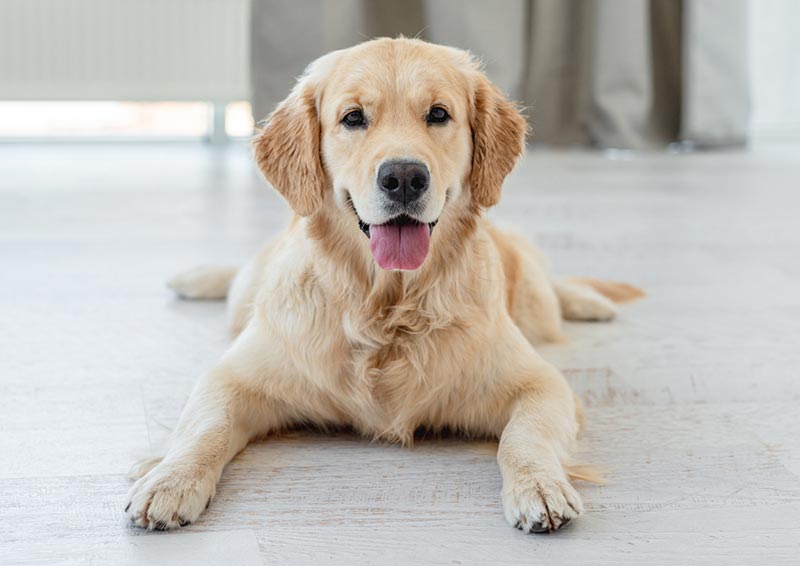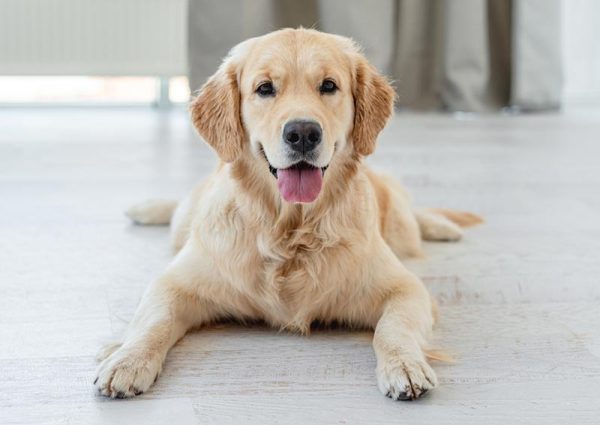Dogs are well equipped for a lot of different terrains. Their claws help them in muddy, wet, and even icy conditions, but one terrain that they struggle with is that of the hard, shiny house floor. If you have laminate, plastic, or polished wood floors, you may have noticed your dog struggling to keep its balance as it walks or shuffles off when excited. While it might be amusing at first, it can cause damage to the floor and may lead to injury for your dog, too.
Below are 15 tips to help keep dogs from slipping and sliding on floors.
The 15 Ways to Stop Dogs from Slipping & Sliding On Floors
1. Paw Pad Care
A dog’s paw pads are used primarily for grip. They are textured so they can give grip in the same way that tires provide grip on the road. But, if your dog’s paws have worn down and become smooth, they won’t provide any grip whatsoever and could be the cause of the problem. Apply balms, waxes, or even moisturizers to help improve the condition of the paws, and if your dog’s paws are in really bad condition, it might be worth visiting the vet to see if they can help in any way.
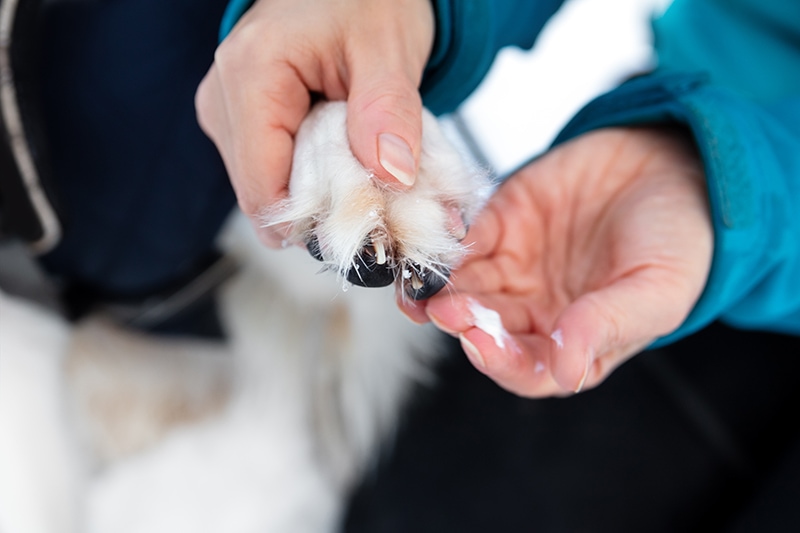
2. Claw Care
Similarly, your dog’s claws can also help with traction, especially on surfaces like lino or tiles. On the other hand, long claws could be the culprit and might be what is causing your dog to slide on wood or other hard surfaces. Most dogs need their claws trimmed every 6 weeks or so, although dogs that walk on concrete and abrasive surfaces a lot might not need trimming as often. Cut the claws, or have a groomer do it for you, and see if it helps minimize slippage.
3. Paw Hair Care
Some dogs have naturally long tufts of hair around the paws. If this hair has got especially long or if it is getting caught between your dog’s claws, it could be acting like a slip mat. Trim the tufts so that they don’t reach the floor while trimming their claws.
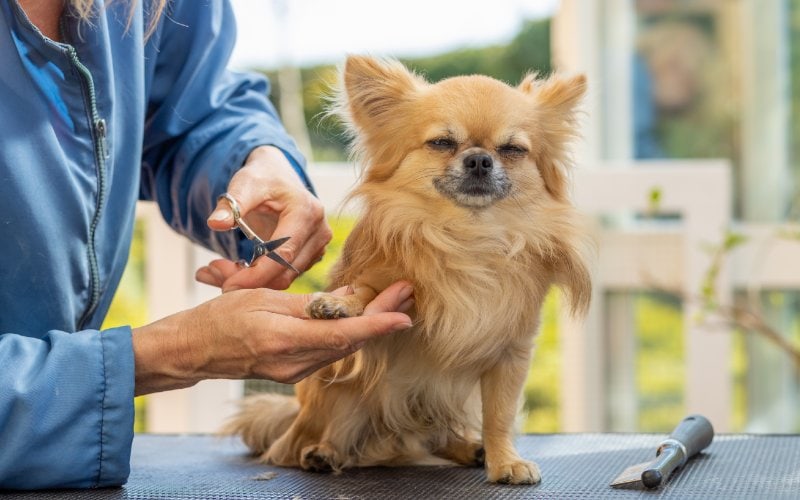
4. Dog Socks
Soft socks can cause slipping rather than cure it, but you can get textured socks that have small textured pads or a textured surface. It can be a challenge to persuade a dog to wear socks if they have never worn them before, but start slow and build up the amount of time you have your dog wear a pair. They may eventually appreciate the fact that they aren’t sliding from wall to wall.
5. Dog Shoes
Similarly, dog shoes can have a textured bottom that prevents slipping. Although shoes are generally worn outdoors to protect against temperatures on the ground, they can prove useful indoors too.
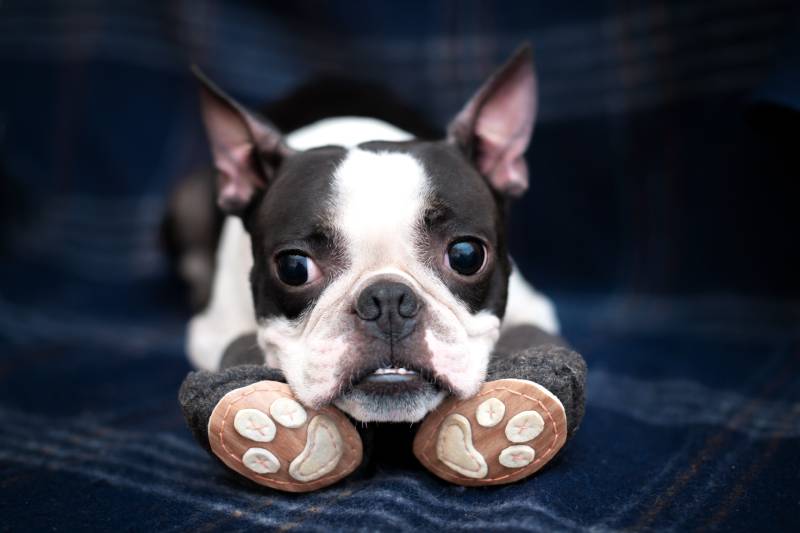
6. Toenail Covers
Toenail covers are small rubber bands that sit around the nails. The rubber doesn’t slip or slide on a hard floor and the nail covers are not as intrusive as socks or shoes. These can be very successful means of preventing canine slippage.
7. Anti-Slip Spray
Anti-slip spray is a spray that you apply to the bottom of a dog’s feet precisely to stop slipping. It is used in exhibitions and shows for their very purpose and can prove really useful for those dogs that struggle with stability on hard floors at home.
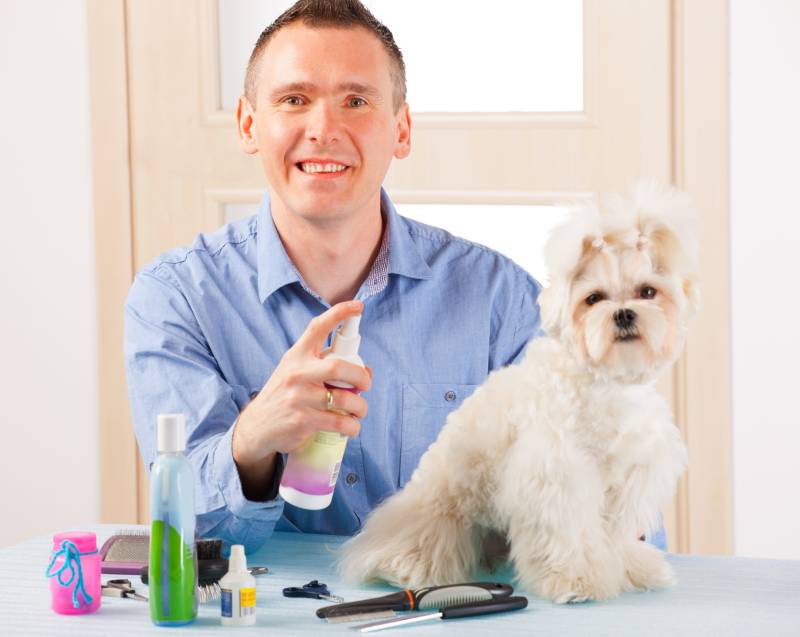
8. Adhesive
Not just any adhesive will do, but you can get adhesive pads or strips designed for the purpose of putting on the bottom of your dog’s feet. These add a textured layer between your dog and the floor. Some dogs dislike the feeling of having pads attached and may try to chew them off, so you will have to keep an eye on your dog, especially the first few times they wear these pads.
9. Gate Off Slippery Surfaces
If there is one particular room or area that is really slippery and it’s feasible to do so, consider adding a stairgate to prevent your dog from accessing this room. Stairgates are easy for humans to open but difficult (although not necessarily impossible) for dogs to circumnavigate. Alternatively, you can close doors, although this may not be a desirable option if the room you are closing off is a living area and you want your dog with you.

10. Mats, Rugs, and Runners
Even if you can’t cover every square inch of the floor, adding runners in hallways, mats in doorways, or rugs in the middle of a room can provide your dog with a platform to work from. If your dog dislikes the slipping motion, it will instinctively head for the rugged area because it means it won’t slide around.
11. Diet
Overweight dogs tend to have more of a slipping problem than dogs of ideal weight. There’s more weight bearing down on their paws, which causes them to slide. If your dog is overweight, measure their food and feed according to their target weight. You can consult with a vet before starting your dog on a diet, as this will help ensure that they still get the nutrition they require.

12. Strength Training
If your dog does slip and slide, it could be a sign that they have poor muscle strength. In any case, stronger muscles will make it easier to maintain good leg position and posture and therefore reduce the risk of slipping. Take your dog to a canine sports class or find ways to enhance their muscular strength at home.
13. Senior Support Sling
Senior dogs can find it very difficult to walk on slippery floors, and especially difficult to get up to a standing position on this type of surface. A sling sits around your dog, and when you see them struggling to get up, you can walk over and take some of the weight while offering stability. It will reduce pressure on the joints and muscles while also helping them get up safely.
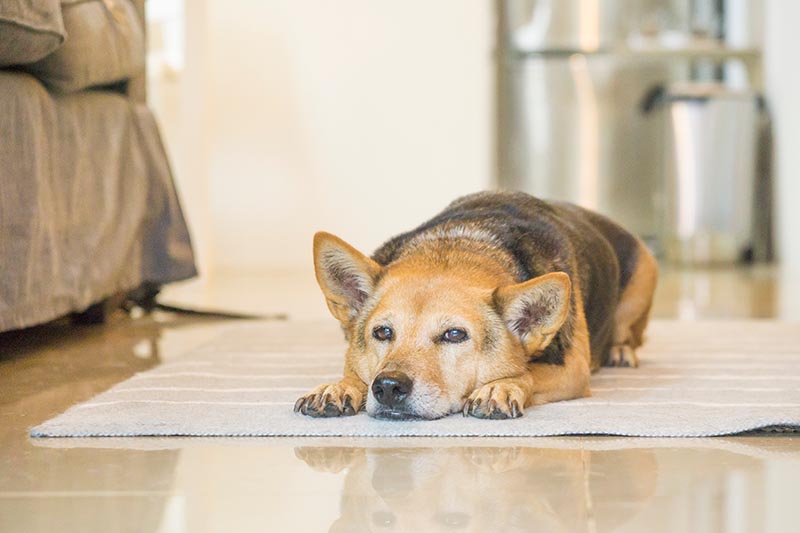
14. Consult a Vet
Some health conditions and illnesses can cause weak joints and slipping on a hard surface might, in fact, be a sign of a condition like hip dysplasia, rather than poor paws. If your dog struggles on other surfaces or you see other symptoms, get them checked by the vet as soon as possible. Dysplasia can be very painful and lead to other health problems.
15. Get New Flooring
It is an extreme solution, but you can change your hard, slippery floor surfaces for something more textured and less likely to cause slippage. Consider carpets or, if you want a wood floor, opt for something with a textured or rough surface, rather than a smooth wood surface.
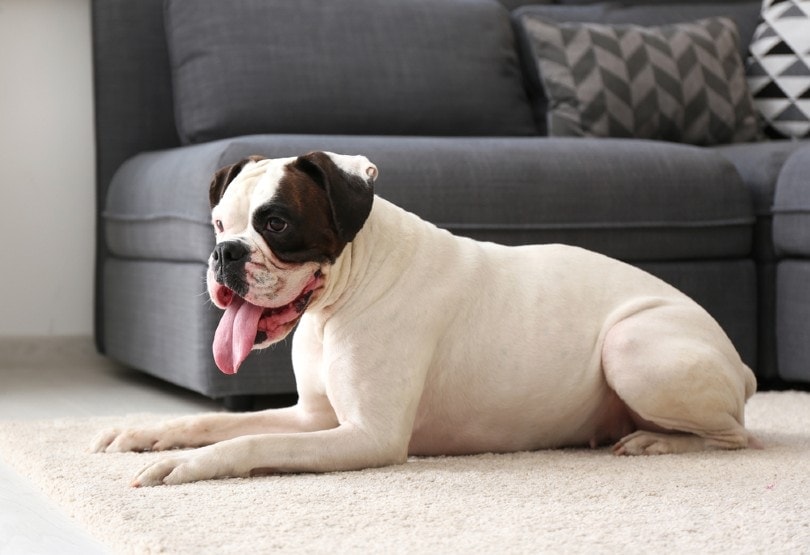

Final Thoughts
Dogs and slippery surfaces don’t always go well together. Surfaces like wood and even some tiles can prove especially difficult for your dog to get traction and stay upright. Slipping on a floor surface can lead to damage to the floor and potential injury to the dog. It may also prevent your dog from going into certain rooms of the house. Hopefully, using one or more of the tips above, you can help stop your dog from slipping on hard floors around your home.
Featured Image Credit: Tatyana Vyc, Shutterstock
Contents
- The 15 Ways to Stop Dogs from Slipping & Sliding On Floors
- 1. Paw Pad Care
- 2. Claw Care
- 3. Paw Hair Care
- 4. Dog Socks
- 5. Dog Shoes
- 6. Toenail Covers
- 7. Anti-Slip Spray
- 8. Adhesive
- 9. Gate Off Slippery Surfaces
- 10. Mats, Rugs, and Runners
- 11. Diet
- 12. Strength Training
- 13. Senior Support Sling
- 14. Consult a Vet
- 15. Get New Flooring
- Final Thoughts

